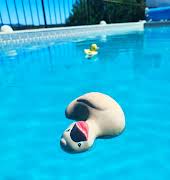Ask the Doctor: ‘Is there a device similar to a leadless single-chamber pacemaker that can be fitted to the atrium?’
By Sarah Gill
16th Apr 2024
16th Apr 2024
All your burning health questions answered by the professionals.
“There is a device called a leadless single-chamber pacemaker, which can be fitted to the ventricle but not to the atrium. Is there a similar device that can be fitted to the atrium?”

Answer from Professor Jonathan Lyne Director of Cardiac Electrophysiology & Consultant Cardiologist & Electrophysiologist
Pacemakers are a common procedure in modern medicine. There are many types of pacemakers inserted for various conditions. More specifically, pacemakers are used to prevent the heart rate or pulse falling beneath a programmable level.
They are highly sophisticated and can be used to increase the heart rate in response to movement or exercise via a small device inside the pacemaker that detects motion or breathing rate.
More complicated devices aim to improve the pumping function of the bottom chambers and can include an extra pacing wire inside the heart to resynchronise it.
This type of device is used commonly in heart failure patients to improve the heart’s efficiency and is known as cardiac resynchronisation therapy. All pacemakers can also be incorporated with a defibrillator function to provide an internal electrical shock to restore normal rhythm in the event of a cardiac arrest for patients that may have an increased risk of sudden death.
In recent years, leadless pacemakers have been developed; they’re small capsules that connect directly with the heart muscle internally and have no leads; advantageous for having less foreign material within the body, which may degrade over time, and because there is no pacemaker ‘box’ felt or seen beneath the skin.
However, due to the smaller size of the device, to fit within the heart, they have less programmable features compared to a conventional pacemaker. They can work in any single chamber; either the atrium, ventricle, or both if required.
One of the main considerations in which device to implant, is how to deal with the device at the end of its lifecycle when the battery needs replacing. Although these devices are very small and can be deactivated, allowing a new device to be inserted alongside the previous device, there may be concerns that in younger patients there may be a need to consider removal or extraction of multiple devices over the patient’s lifetime. Currently, extraction equipment is typically available mainly for traditional pacemaker leads and devices, designed to mechanically cut over existing pacemaker leads to allow their removal. For leadless devices, extraction equipment is still in its infancy and testing/design stages.
Each patient is treated on an individual basis, so it is best to discuss your options, preferences, and concerns in depth with your clinician before the implant procedure to ensure you get the best device for your needs.
Have a question for the professionals you’d like answered? Get in touch with [email protected] with the subject headline ‘Ask The Doctor’.




















